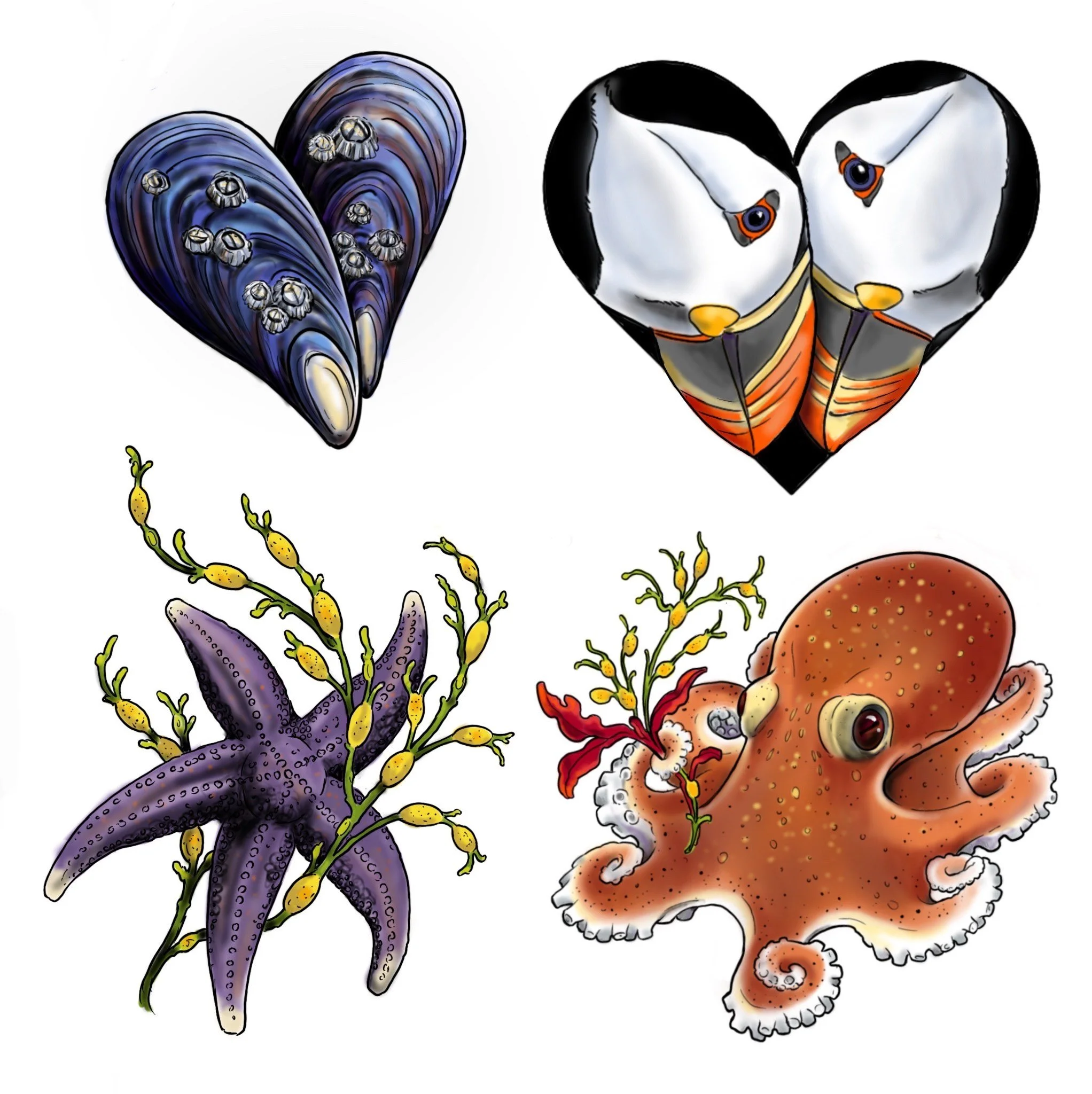What is flash? Flash is what we call predawn tattoo designs. They are ready to be tattooed as is, just pick the one you want. Typically they can be tattooed multiple times on different people (though I always find ways to make them unique from person to person).
What is a flash special? A flash special is what I call it when I launch a set of flash designs centered around a particular theme and offer them for a limited time with a limited number of appointments.
Who can participate? Anyone! Existing or new clients are welcome to get these designs. In fact, it’s one of my favorite ways to meet new clients.
When do they happen? Randomly, when I have the time and inspiration. I announce them on my instagram, website, and through my mailing list.
OCEAN CUTIES FLASH SPECIAL <3
TATTOO BOOKING INFO:
Designs can be tattooed in black and grey or color.
No hands or feet, nothing above the collarbone. A tattoo on the ribs or front of the torso will have an increased price.
Price depends on size and style. $200 min -$600 max
TO BOOK:
Fill out the form below to request an appointment
Wait for an email back with the day and time I can tattoo you.
Once we have confirmed a day and time, send a $50 deposit to secure your spot. (I will send instructions on how to do that when I email you back). Deposits are non-refundable but apply to the cost of the tattoo.
